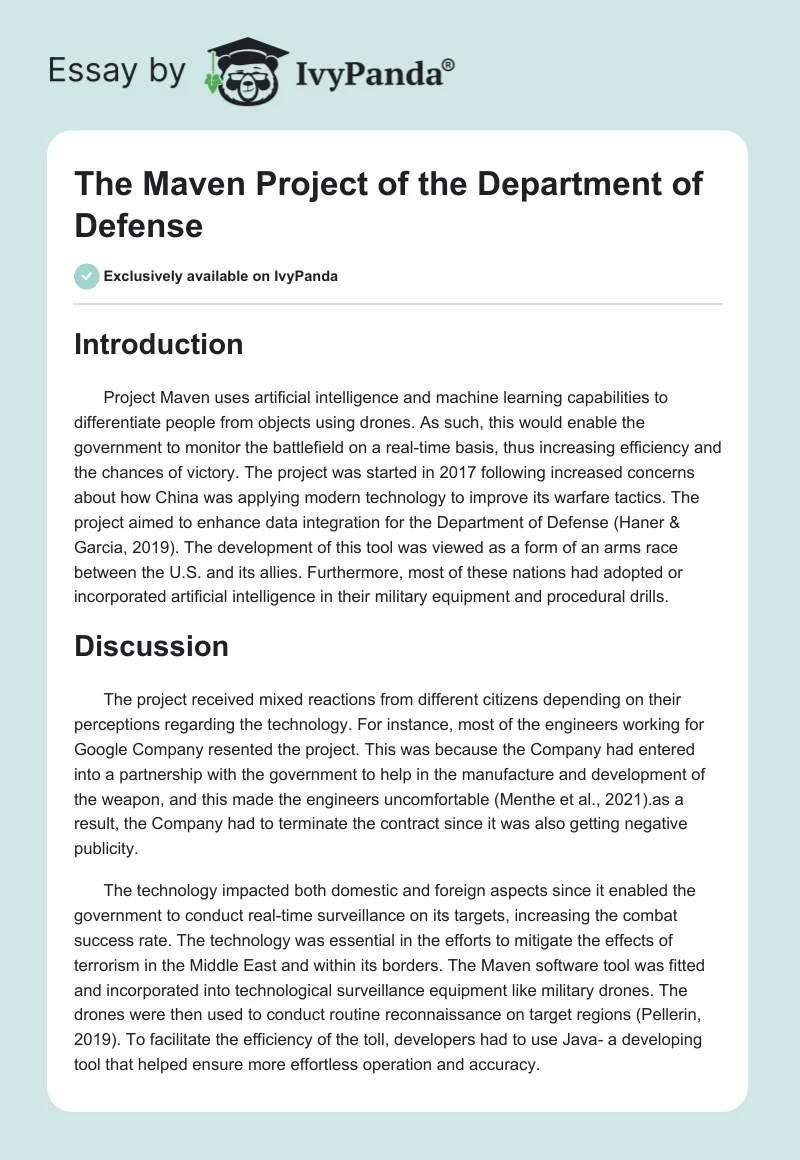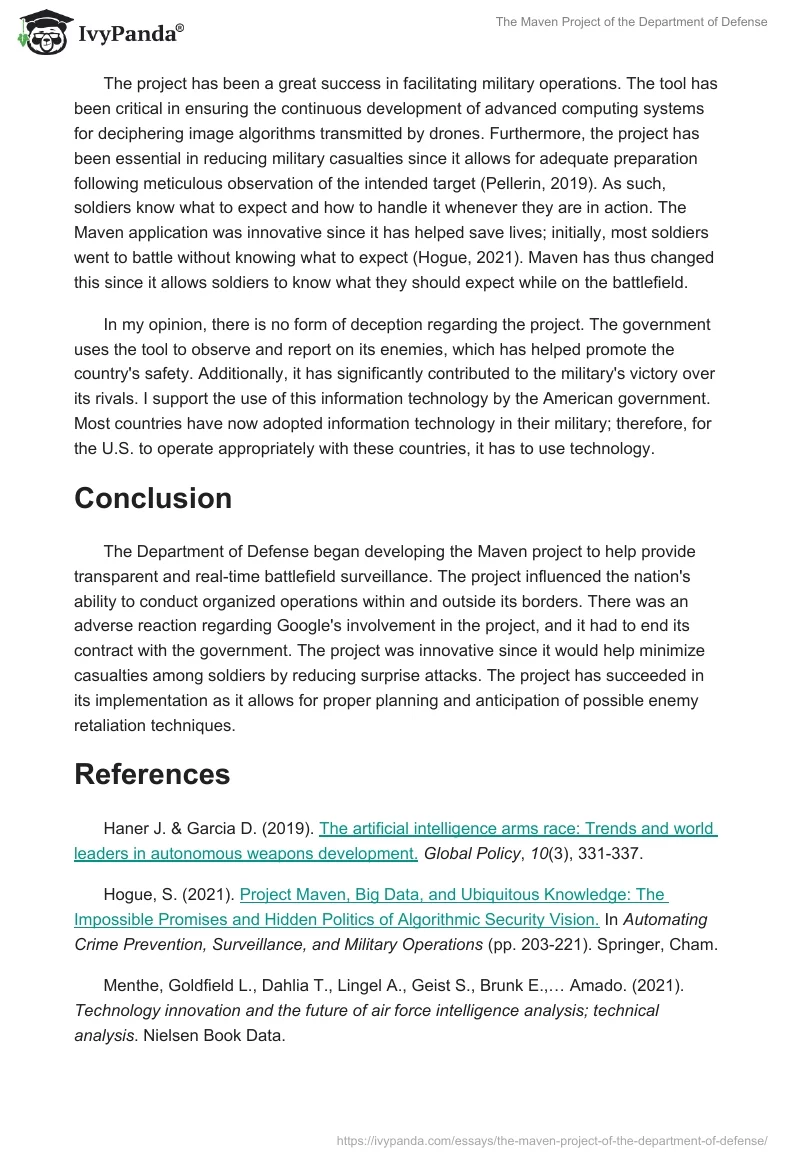Introduction
Project Maven uses artificial intelligence and machine learning capabilities to differentiate people from objects using drones. As such, this would enable the government to monitor the battlefield on a real-time basis, thus increasing efficiency and the chances of victory. The project was started in 2017 following increased concerns about how China was applying modern technology to improve its warfare tactics. The project aimed to enhance data integration for the Department of Defense (Haner & Garcia, 2019). The development of this tool was viewed as a form of an arms race between the U.S. and its allies. Furthermore, most of these nations had adopted or incorporated artificial intelligence in their military equipment and procedural drills.
Discussion
The project received mixed reactions from different citizens depending on their perceptions regarding the technology. For instance, most of the engineers working for Google Company resented the project. This was because the Company had entered into a partnership with the government to help in the manufacture and development of the weapon, and this made the engineers uncomfortable (Menthe et al., 2021).as a result, the Company had to terminate the contract since it was also getting negative publicity.
The technology impacted both domestic and foreign aspects since it enabled the government to conduct real-time surveillance on its targets, increasing the combat success rate. The technology was essential in the efforts to mitigate the effects of terrorism in the Middle East and within its borders. The Maven software tool was fitted and incorporated into technological surveillance equipment like military drones. The drones were then used to conduct routine reconnaissance on target regions (Pellerin, 2019). To facilitate the efficiency of the toll, developers had to use Java- a developing tool that helped ensure more effortless operation and accuracy.
The project has been a great success in facilitating military operations. The tool has been critical in ensuring the continuous development of advanced computing systems for deciphering image algorithms transmitted by drones. Furthermore, the project has been essential in reducing military casualties since it allows for adequate preparation following meticulous observation of the intended target (Pellerin, 2019). As such, soldiers know what to expect and how to handle it whenever they are in action. The Maven application was innovative since it has helped save lives; initially, most soldiers went to battle without knowing what to expect (Hogue, 2021). Maven has thus changed this since it allows soldiers to know what they should expect while on the battlefield.
In my opinion, there is no form of deception regarding the project. The government uses the tool to observe and report on its enemies, which has helped promote the country’s safety. Additionally, it has significantly contributed to the military’s victory over its rivals. I support the use of this information technology by the American government. Most countries have now adopted information technology in their military; therefore, for the U.S. to operate appropriately with these countries, it has to use technology.
Conclusion
The Department of Defense began developing the Maven project to help provide transparent and real-time battlefield surveillance. The project influenced the nation’s ability to conduct organized operations within and outside its borders. There was an adverse reaction regarding Google’s involvement in the project, and it had to end its contract with the government. The project was innovative since it would help minimize casualties among soldiers by reducing surprise attacks. The project has succeeded in its implementation as it allows for proper planning and anticipation of possible enemy retaliation techniques.
References
Haner J. & Garcia D. (2019). The artificial intelligence arms race: Trends and world leaders in autonomous weapons development.Global Policy, 10(3), 331-337.
Hogue, S. (2021). Project Maven, Big Data, and Ubiquitous Knowledge: The Impossible Promises and Hidden Politics of Algorithmic Security Vision. In Automating Crime Prevention, Surveillance, and Military Operations (pp. 203-221). Springer, Cham.
Menthe, Goldfield L., Dahlia T., Lingel A., Geist S., Brunk E.,… Amado. (2021). Technology innovation and the future of air force intelligence analysis; technical analysis. Nielsen Book Data.
Pellerin, C. (2019).Project Maven to deploy computer algorithms to the war zone by year’s end. U.S. Department of Defense.


